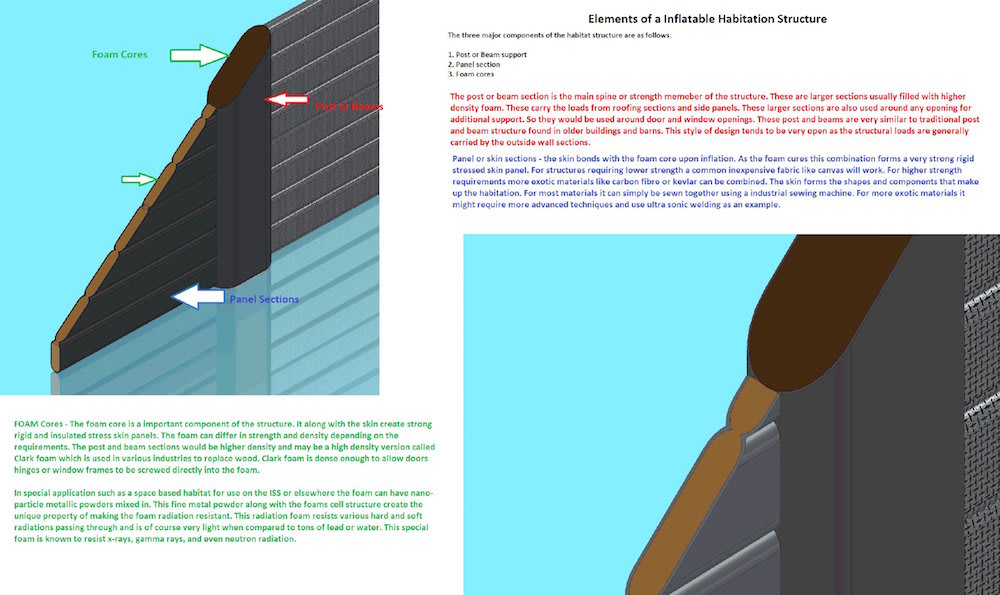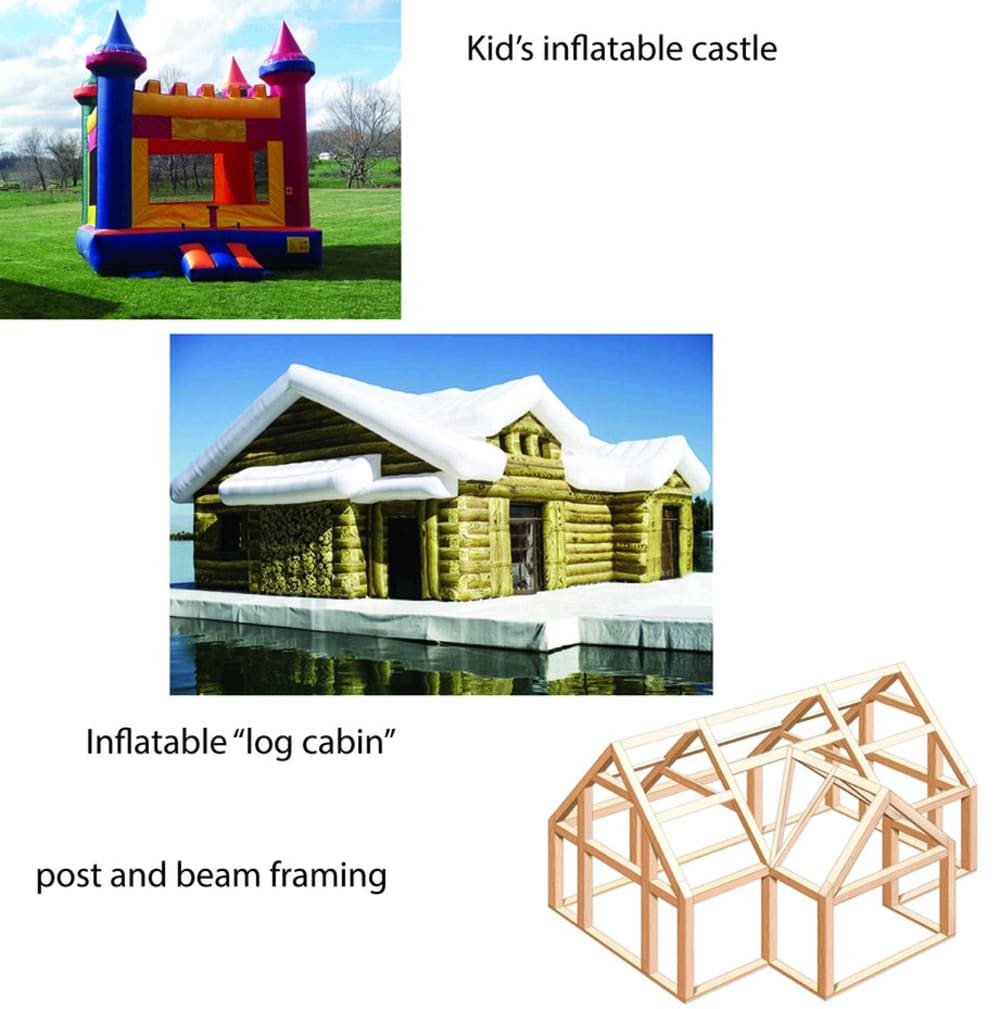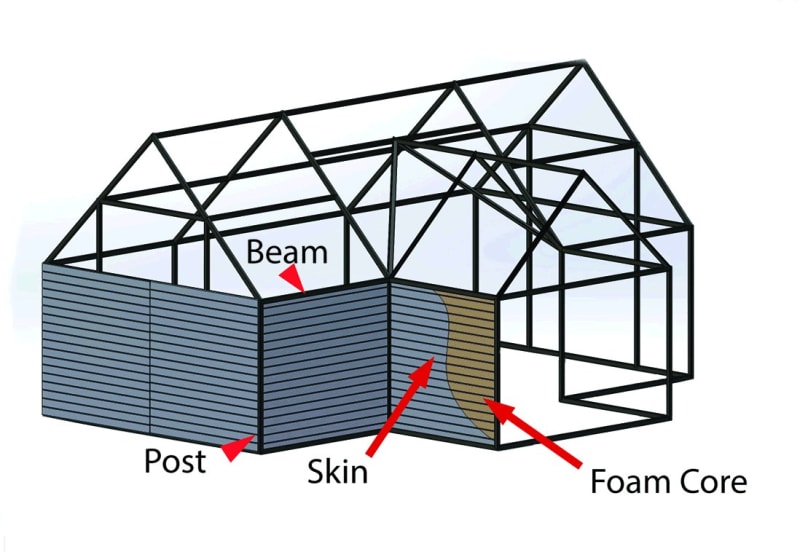This concept came after watching “The Martian” and seeing news footage of a earthquake relief camp. “The Martian” showed an inflatable habitat used on Mars, while the news showed people still living in nylon tents years after the earthquake.
Inflatable structures use an inflated spine to form the shape with plastic walls. More complex structures also are inflatable, like tents, displays or even football field sized event buildings. All inflate using low pressure air (5-12 psi). None are intended as long term structures and all depend on maintaining air pressure to stay erect.
These structures have desirable features, the main ones being quick “build” time and the ability to form usable shapes. These buildings are quite inexpensive. A large structure (2600 sq ft) can be purchased for $3100 including air pump.
What if we could turn that into a useful long term or even permanent structure with only minor changes?
There are two necessary changes. One is replacing the air pressure system. The other is changing the vinyl material for something that stands up to UV and other environmental concerns.
To get rid of the air pressure system we use expanding rigid urethane foam. This is commonly used as spray insulation in homes. This foam can be mixed in various densities and strengths up to those that mimic real wood properties (Clark foam). We can mix metallic nano-powders into the foam and have radiation safe habitats for use in space.
The vinyl layers can be replaced by many materials such as common fabrics or others like carbon fiber or Kevlar.
The basic structure is posts and planks. These fill with the expanding foam to form a solid structure that resembles a log cabin. The foam core and skin form very strong stressed skin panels that are very durable, and well insulated. It could incorporate wiring and led lighting right into the structure if desired. For temporary dwelling plastic windows and fabric doors work. For a permanent structure the high density Clark foam lets builders screw hinges or window frames into place to use standard windows and doors.
We can inflate a structure and have it ready for habitation within a single day. It would start off as a man portable bundle of fabric moved onto the construction site. Then it is spread out and anchored in position. (*optional cement pad). Next attach foam canisters and inflate the structure. The foam expands into the tubes and is fully cured within 3 hours. At this point the structure is finished, just add doors, windows, and occupants!
A properly designed structure will be as strong as a conventional wood framed house. The foam and skin can last 40-50 years. Cost could be as low as $4 ft2 compared to $150 ft2 for a conventional wood framed house. At the end of its useful life the house can easily be recycled.
This concept would allow for inexpensive emergency or permanent dwellings or even radiation safe habitats in space.
Like this entry?
-
About the Entrant
- Name:Dave King
- Type of entry:individual
- Software used for this entry:Solidworks, Comsol Multiphysics
- Patent status:pending








